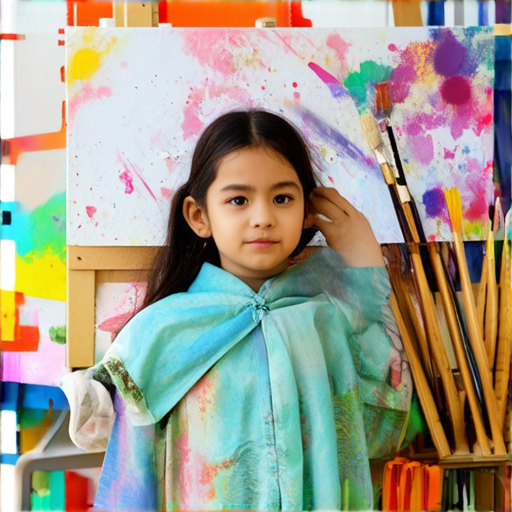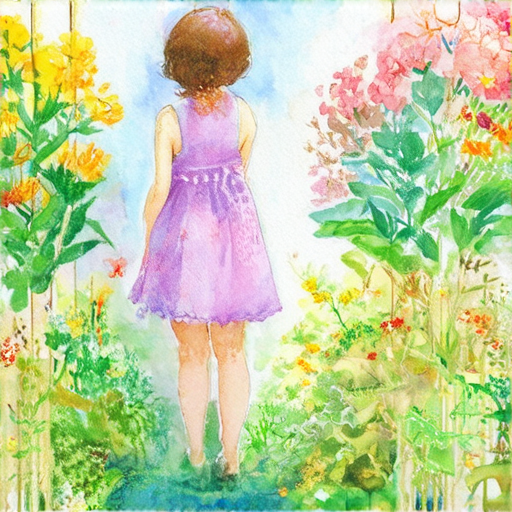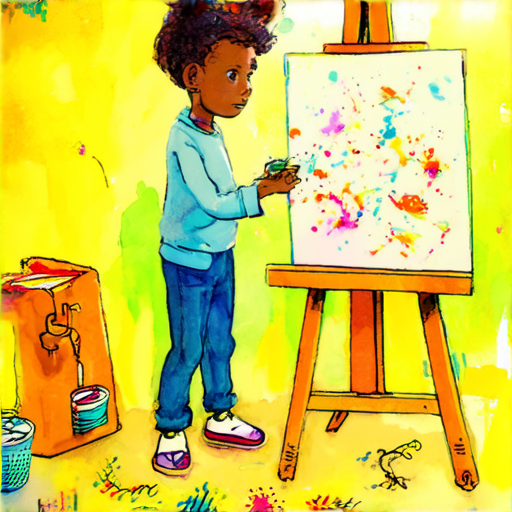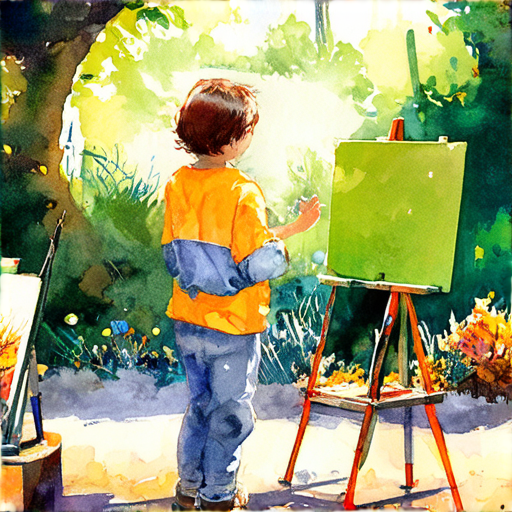
The Easiest Art to Start With
As an artist looking to explore your creativity, choosing the right medium can be overwhelming.
- Drawing: Drawing is a fundamental skill that serves as the foundation for many art forms. It involves creating two-dimensional images using various tools and techniques, making it an excellent starting point for beginners.
- Painting: Painting is another popular art form that allows you to express yourself through colors and textures. Watercolor, acrylic, and oil painting are some of the most common types of painting, each offering unique challenges and opportunities for creativity.
- Sculpture: Sculpture involves creating three-dimensional objects using materials like clay, wood, or metal. This art form requires patience, attention to detail, and a willingness to experiment with different techniques.
- Collage: Collage is a versatile art form that involves combining different materials and textures to create unique pieces. It’s an excellent option for those who enjoy working with mixed media and experimenting with different techniques.
When deciding which art to start with, consider your interests, skills, and available resources. Drawing and painting are great options for those who want to develop their fine motor skills and learn color theory. Sculpture and collage require more physical effort and experimentation, making them ideal for those who enjoy hands-on activities.
Remember, the easiest art to start with is often the one that sparks your passion and curiosity. Experiment with different mediums, techniques, and styles until you find what works best for you.
Tips for Beginners
- Start with simple exercises: Begin with basic drawing exercises like gesture drawing, contour drawing, and shading. These exercises will help you develop your observation skills and get comfortable with different drawing tools.
- Practice regularly: Consistency is key when developing your artistic skills. Set aside time each day or week to practice drawing, painting, or sculpting.
- Experiment with different materials: Don’t be afraid to try new materials and techniques. This will help you discover what works best for you and keep your art interesting and challenging.
- Seek feedback and guidance: Join online communities, take classes, or work with a mentor to receive constructive feedback and guidance. This will help you improve your skills and stay motivated.
Getting Started with Artfull Journey
At Artfull Journey, we offer a variety of resources and tutorials to help you get started with your artistic journey. From beginner-friendly guides to advanced techniques, our website provides everything you need to explore your creativity and develop your skills.
Visit our Resources Page to access our collection of tutorials, videos, and downloadable assets. Our community forum is also a great place to connect with fellow artists, share your work, and receive feedback and support.
We’re excited to have you join us on this artistic journey! Remember to always have fun, experiment with new ideas, and push yourself to grow and improve.
As a Beginner Artist, Here’s What You Should Do
I’m excited to share my journey as a beginner artist with you, and I hope these tips will help you get started on yours.
- Draw Something You Enjoy
- Practice Every Day
- Take Online Courses or Watch Tutorials
- Join a Community of Artists
- Experiment with Different Mediums
- Learn from Criticism
- Stay Inspired
- Set Realistic Goals
- Have Fun
Whether it’s painting, sketching, or digital art, find what makes you happy and stick to it. Remember, art is a form of self-expression, so don’t be afraid to experiment and try new things.
Consistency is key when it comes to improving your skills. Set aside a few minutes each day to practice drawing or painting, and you’ll see significant progress over time.
There are countless online resources available to help you learn new techniques and improve your skills. Websites like Skillshare, Craftsy, and YouTube offer a wealth of knowledge and inspiration.
Connecting with other artists can be incredibly motivating and helpful. Look for local art groups, join online forums, or participate in social media communities to connect with fellow creatives.
Don’t be limited to just one medium – explore different materials and techniques to discover what works best for you. You might be surprised at how much you enjoy working with a particular medium!
Criticism can be tough to hear, but it’s an essential part of growing as an artist. Use feedback from others to identify areas for improvement and push yourself to grow.
Surround yourself with art, nature, and beauty. Visit museums, galleries, and exhibitions to stay inspired and motivated. Read books, watch documentaries, and explore different cultures to broaden your perspective.
Achieving success takes time, patience, and dedication. Set realistic goals for yourself, celebrate your successes, and don’t be too hard on yourself when faced with setbacks.
Most importantly, remember to have fun! Art is a journey, not a destination. Enjoy the process, learn from your mistakes, and cherish the moments of joy and creativity.
By following these tips, you’ll be well on your way to becoming a confident and skilled artist. Remember to always keep learning, experimenting, and pushing yourself to grow. Happy creating!

The Seven Main Things of Art
As an artist, understanding the fundamental components of art is crucial for creating visually appealing and meaningful pieces.
-
Line
A line is a continuous mark made on a surface by a drawing tool. It can vary in width, length, direction, and curvature, and is often used to define shape, form, and movement in a composition.
-
Shape
A shape is a self-contained area with a defined boundary. Shapes can be geometric, such as circles and squares, or organic, like free-form shapes found in nature.
-
Space
Space refers to the negative areas between and around objects in a composition. It can be used to create a sense of depth, distance, and atmosphere in a piece of art.
-
Value
Value refers to the lightness or darkness of a color or object in a composition. It can be used to create contrast, harmony, and mood in a piece of art.
-
Form
Form refers to the three-dimensional qualities of an object or shape. It can be created through the use of light and shadow, texture, and other visual elements.
-
Texture
Texture refers to the surface quality or “feel” of an object or material. It can be physical, like the roughness of stone, or visual, like the smoothness of glass.
-
Color
Color is a property of light that is perceived by the eye. It can be used to evoke emotions, convey meaning, and create mood in a piece of art.
By understanding and working with these seven main things of art, artists can create complex, nuanced, and engaging compositions that communicate their ideas and intentions effectively.

What is the Easiest Thing to Paint as a Beginner?
As a beginner, it’s essential to start with simple and fun projects that can help you build confidence and develop your skills.
- Simple Still Life Setups: Start by painting everyday objects like fruit, flowers, or household items. These subjects are relatable and easy to observe, making them perfect for beginners.
- Abstract Designs: Explore the world of abstract art by creating unique and expressive pieces using colors, shapes, and textures. This style allows for freedom and experimentation, making it an excellent choice for those new to painting.
- Geometric Patterns: Geometric patterns are another great option for beginners. They involve repeating shapes and colors, which can be calming and meditative to create.
- Landscape Painting: Broad brushstrokes and soft colors can create beautiful landscape paintings. Focus on capturing the essence of nature rather than precise details.
Remember, the key to improving your painting skills is to practice regularly and have fun. Don’t be afraid to experiment and try new things – it’s all part of the learning process!
Getting Started with Artfull Journey
At Artfull Journey, we offer a variety of resources and tutorials to help you get started with painting. From basic techniques to advanced methods, our website provides a wealth of information to support your artistic journey.
Additional Tips and Inspiration
For more tips and inspiration, check out these popular art blogs and communities:
Getting Started with Painting
As a beginner artist, it can be overwhelming to decide where to begin with painting.
-
Start with Simple Subjects
Beginners often find it easiest to start with simple subjects like leaves, flowers, and basic shapes.
- Leaves and branches are great subjects to practice color mixing and blending.
- Flowers offer a chance to experiment with texture and pattern.
- Basics shapes allow you to focus on proportions and perspective.
Practice Basic Techniques
Mastering basic techniques like brushstrokes, layering, and blending is essential for any painter.
- Experiment with different brushstrokes to achieve unique textures and effects.
- Learn to layer colors to achieve depth and dimension.
- Practice blending colors to create smooth transitions.
Explore Different Mediums
Don’t be afraid to try out different mediums like watercolor, acrylic, or oil paints.
- Watercolor is perfect for loose, expressive pieces.
- Acrylics are ideal for bold, vibrant works.
- Oils offer a rich, blended look.
Join a Community
Connecting with fellow artists can be incredibly motivating and helpful.
- Share your work and get feedback from others.
- Learn from experienced artists and take classes or workshops.
- Participate in online forums or social media groups.
Remember, the most important thing is to have fun and enjoy the process of creating.
With patience and practice, you’ll be well on your way to becoming a skilled painter.
For more tips and resources, check out our Tutorials page and explore our Community section.

Choosing Between Watercolor and Acrylic for Beginners
When it comes to choosing between watercolor and acrylic paint for beginners, there are several factors to consider.
- Versatility: Acrylic paint is generally considered more versatile than watercolor paint, allowing for a wider range of techniques and effects.
- Ease of Use: Both watercolor and acrylic paint can be easy to use, but acrylic paint may be slightly more forgiving for beginners due to its fast-drying properties.
- Cleanup: Watercolor paint requires water for cleanup, while acrylic paint can be cleaned up with soap and water.
- Durability: Acrylic paint is generally more durable than watercolor paint, making it a better choice for projects that need to withstand wear and tear.
- Cost: Watercolor paint is often less expensive than acrylic paint, making it a more budget-friendly option for beginners.
Considerations for Beginners
As a beginner, it’s essential to consider your goals and preferences when choosing between watercolor and acrylic paint.
- Experimentation: If you’re looking to experiment with different techniques and effects, acrylic paint may be a better choice.
- Realism: If you’re interested in creating realistic paintings, watercolor paint may be a better choice due to its ability to capture subtle color shifts and nuances.
- Portability: If you plan to take your paint supplies on the go, watercolor paint may be a better choice due to its lightweight and compact nature.
Ultimately, the Choice is Yours
The decision between watercolor and acrylic paint ultimately comes down to personal preference and your individual needs as a beginner artist.
We recommend trying out both types of paint to see which one works best for you, and don’t be afraid to experiment and try new things!
At Artfull Journey, we offer a variety of resources and tutorials to help you get started with both watercolor and acrylic paint.
Whether you’re just starting out or looking to improve your skills, we’re here to support you every step of the way.

0 Comments